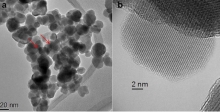
Researchers at Stony Brook University have developed a safer, less-intrusive method to administer MRI scans. They have used a breakthrough substance, called graphene, to view higher-contrast images of scans and achieve those images less intrusively.
Graphene is a one-atom-thick sheet of pure carbon arranged in a manner similar to graphite. It has gained huge publicity in the past few months as researchers all over the world have realized its potential. This past week, for example, Lockheed Martin announced that it promises to develop a system to inexpensively filter saltwater into drinking water by using a sheet of graphene.
In addition to vital uses, like Stony Brook University’s MRI research and Lockheed Martin’s water filtration, graphene has been used by UC Berkeley to develop headphones and Samsung’s plausible future antennae, and many other “incredible” uses, as Gizmodo names in a recent article.
Stony Brook University’s exciting innovation is the latest in a long line of SUNY contributions to medical imaging, beginning with the invention of MRI technology by Nobelist Paul Lauterbur in the 1970s.
In this application, graphene can allow the same clinical MRI performance at substantially lower dosages and safer to biological tissues. It may also allow imaging for certain conditions that aren’t currently available and could lead to higher contrast imaging down to the molecular level.
Dr. Balagi Sitharaman, assistant professor of biomedical engineering, sees the potential for a graphene-based method of drug delivery — loading drugs onto the nanoparticles and then following them in real time via imaging to assess treatment outcomes.
This discovery came out of a long research program to understand the imaging potential of different carbon nanomaterials and years of tinkering with the structure. Now, Dr. Sitharaman is focused on developing the new agent to commercial use. Preclinical studies are progressing and he hopes clinical studies will begin in a couple years. “We’re following the regulatory path for contrast agents,” he says.

